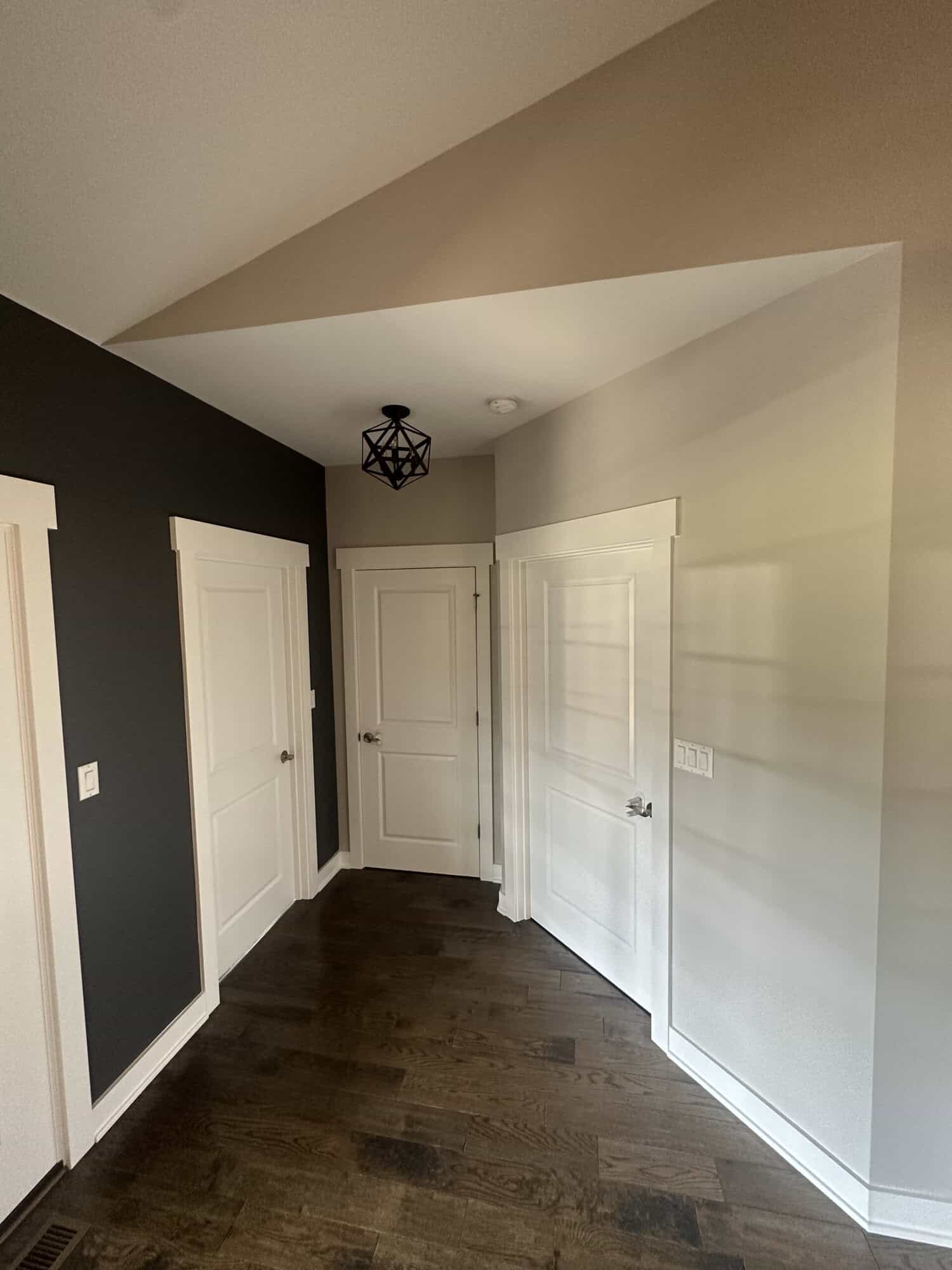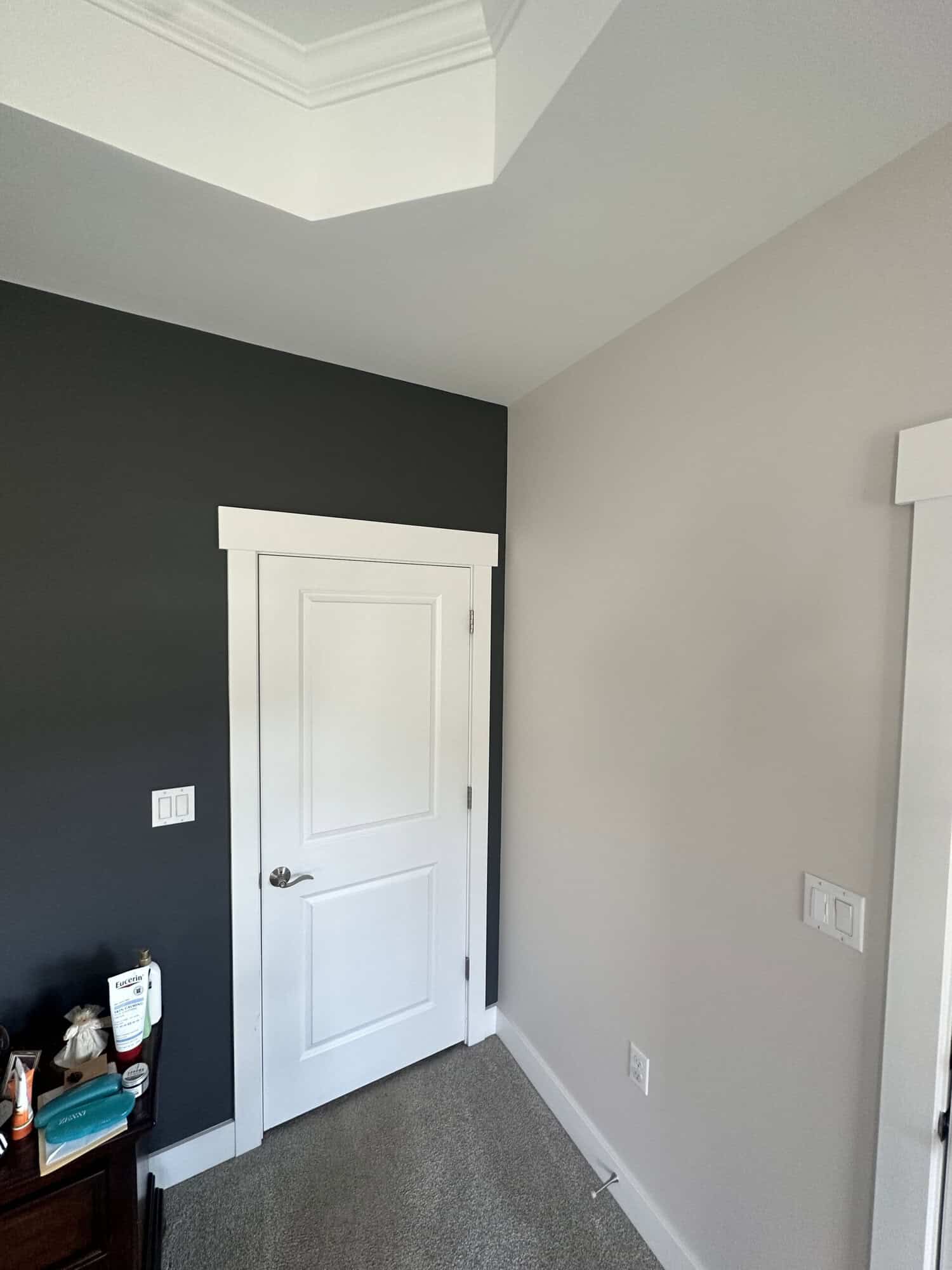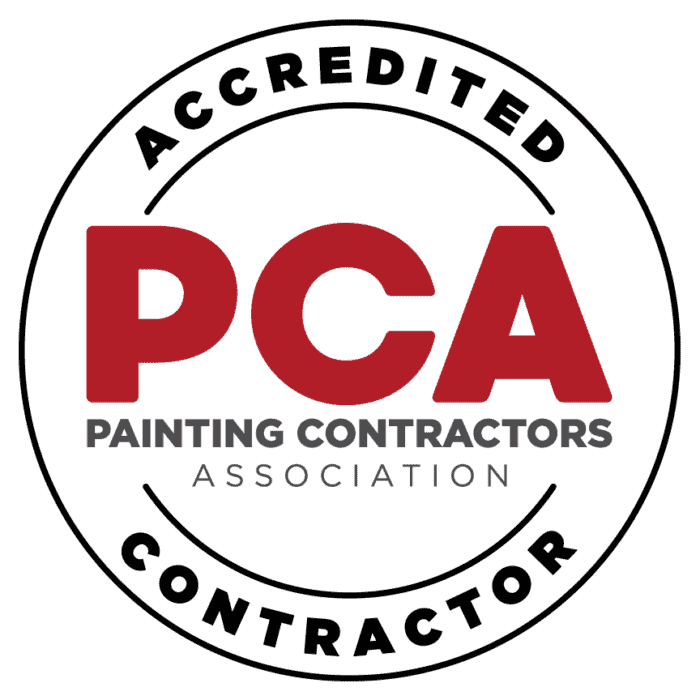The answer isn’t always straightforward. Both painting methods have their strengths, and both can produce professional-looking results. What matters most is the type of surface, the scale of the project, the quality of paint being used, and how long you want the finish to last.
Spray painting is known for its speed and ultra-smooth finish, particularly on large or flat surfaces. Rolling, on the other hand, is often more forgiving, more cost-effective, and practical for smaller rooms or textured walls. Choosing the wrong method for the wrong project can mean wasted time, wasted money, or worse—a finish that doesn’t last.
This blog breaks down the debate in detail. You’ll learn about:
-
Application efficiency and prep requirements
-
Finish quality and smoothness
-
Durability and longevity
-
Cost, labor, and cleanup factors
By the end, you’ll have a clear, fact-based framework for deciding when spraying is worth the investment and when rolling is the smarter choice.
Spray vs. Roller Painting – Understanding the Basics
Spray Painting Overview
Spray painting uses either airless sprayers or HVLP (high-volume, low-pressure) sprayers to atomize paint into a fine mist that coats the surface.
-
Best for large, flat, or smooth surfaces such as walls, ceilings, cabinetry, and doors.
-
Achieves a fast, uniform finish without visible brush or roller marks.
-
Provides easy access to corners, edges, and tight details.
Drawbacks? Overspray is a real risk, requiring extensive masking and preparation. Equipment also comes with a higher upfront cost compared to rollers and brushes.
Roller Painting Overview
Rollers are the most common, cost-effective painting tool for walls and ceilings. Available in various nap lengths, rollers are adaptable to both smooth drywall and textured surfaces. Brushes are usually paired with rollers for edges and trim.
-
Ideal for drywall, ceilings, textured walls, and smaller spaces.
-
Allows greater control over application.
-
Less overspray and less masking required.
The downside is speed. Covering large walls with a roller takes significantly longer, and roller marks or “stipple” textures may be visible on smooth finishes.
Surface Suitability and Preparation
Surfaces Best for Spray Painting
Spray painting excels when the surface is flat, smooth, and requires a flawless finish. Examples include:
-
Interior walls and ceilings (especially in new builds with minimal furniture).
-
Cabinets, doors, and furniture, where a near-factory finish is desired.
-
High-gloss or semi-gloss paints, which look streak-free when sprayed.
Surfaces Best for Rolling
Rolling shines on surfaces where control and precision matter more than speed:
-
Textured walls or ceilings that require paint to penetrate grooves.
-
Small rooms where overspray risks damaging floors or fixtures.
-
DIY-friendly projects where minimal masking is preferred.
Recommended Prep Products and Tools
Durability begins with prep. Regardless of spraying or rolling, using the right products ensures paint adheres well and lasts longer:
-
Primers: Zinsser Cover-Stain, Sherwin-Williams Multi-Purpose Primer
-
Caulks/Sealants: Sashco Big Stretch, SherMax Elastomeric
-
Sanding Tools: Festool or Makita orbital sanders
-
Masking Supplies: 3M Painter’s Tape, drop cloths, protective sheeting
Failing to prep properly is one of the biggest reasons paint jobs—whether sprayed or rolled—fail prematurely.
Finish Quality: Smoothness and Consistency

Spray Painting Finish Characteristics
Spray painting produces an ultra-smooth, professional-level finish that eliminates brush or roller marks.
-
Perfect for high-end finishes on cabinets, doors, or trim.
-
Works best with paints that demand sheen consistency, like semi-gloss or gloss.
-
Requires practice: too much paint can cause drips, too little can leave patchy coverage.
Roller Finish Characteristics
Rolling creates a slightly textured look, which is often preferred for walls because it hides imperfections.
-
Offers controlled, even coverage.
-
Works well with matte or eggshell paints.
-
Multiple coats may be required to achieve the same smoothness as spraying.
Real-World Examples
-
Kitchen Cabinets: Spraying achieved a near-factory finish in just 2 coats with Benjamin Moore Advance enamel.
-
Living Room Walls: Rolling took 3 coats with Sherwin-Williams Duration, leaving a subtle stipple texture that worked well for the room’s style.
Longevity and Durability
Factors Influencing Longevity
Durability depends less on whether you spray or roll and more on prep, paint quality, and application technique.
Key elements include:
-
Proper cleaning and sanding before priming.
-
Using premium paints rather than budget-grade options.
-
Applying the correct number of coats for full coverage.
Spray Painting vs. Roll Longevity Insights
Both methods can last for years when done correctly:
-
Spray Painting: Creates thin, even layers that are less prone to cracking or peeling.
-
Roll: Applies thicker coats, which can sometimes require touch-ups sooner on textured surfaces.
Product-Specific Longevity Tips
-
Exterior Acrylic Paints: Sherwin-Williams Duration or Benjamin Moore Aura perform exceptionally when sprayed or rolled.
-
High-Solids Interior Paints: Retain sheen longer when sprayed onto smooth walls.
Application Efficiency and Labor Considerations
Spray Painting Efficiency
Sprayers can cover 400–500 sq. ft. per hour, making them ideal for large, open spaces.
-
Best suited for new construction, vacant interiors, or large commercial projects.
-
Requires additional labor for masking and cleanup.
-
Saves money on big projects but may not be cost-effective for small rooms.
Rolling Efficiency
Rolling typically covers 150–250 sq. ft. per hour.
-
More efficient for small, detailed, or furnished rooms.
-
Less prep work and masking required.
-
Perfect for DIY painters who value control over speed.
Comparison Table
| Factor | Spray Painting | Rolling |
|---|---|---|
| Labor Time | Faster for large surfaces | Slower |
| Prep & Masking | Extensive | Minimal |
| Equipment Cost | High (sprayers, hoses, tips) | Low (rollers, trays, brushes) |
| Paint Waste | Higher (overspray) | Lower |
| Finish Quality | Ultra-smooth | Slight texture |
Common Concerns and How to Address Them
Overspray and Cleanup
-
Spray Painting: Requires drop cloths, protective sheeting, and painter’s tape to avoid coating unintended areas. Cleanup involves flushing the sprayer with water or solvent.
-
Roll: Minimal overspray; cleanup usually means rinsing rollers and brushes.
Skill and Technique
-
Spray Painting: Demands practice to avoid uneven coats or drips. Professionals often recommend beginners practice on scrap material.
-
Roll: More forgiving, though proper technique (maintaining a wet edge, even pressure) is still key to avoiding lap marks.
Touch-Ups and Maintenance
-
Spray Painting: Touch-ups can be tricky since matching the sprayed texture isn’t easy.
-
Roll: Touch-ups blend more seamlessly with existing paint, making maintenance easier.
People Also Ask
Q: Does spray painting produce a smoother finish than rolling?
Yes. Spraying delivers a more flawless finish, especially on smooth surfaces, while rolling often leaves subtle texture.
Q: Which method is more durable, spray or roll?
Both are equally durable when proper prep and high-quality paint are used.
Q: Is spray painting more expensive than rolling?
Sprayers and prep increase upfront costs, but spraying can save labor expenses on large projects.
Q: Can premium paint be used with a roller?
Yes. Premium paints work well with rollers, but multiple coats may be required to match the smoothness of spraying.
Q: Is spray painting recommended for DIY projects?
It can be, but spraying requires more skill and prep. For beginners, rolling is often easier and safer.
Choosing the Right Method for Your Home
So, which should you choose—spray or roll?
If you’re working on large, smooth surfaces and want a flawless finish, spraying is worth the extra prep and equipment. On the other hand, if you’re tackling small rooms, textured walls, or DIY projects, rolling is more practical, cost-effective, and forgiving.
Both methods can deliver long-lasting, high-quality results when paired with premium paints and proper preparation. The best choice ultimately depends on your surface type, budget, and desired finish.
Think of it this way: spraying is like investing in a luxury vehicle—fast, sleek, and high-performance. Rolling is like choosing a reliable truck—steady, practical, and dependable.
Either way, your walls will thank you.








